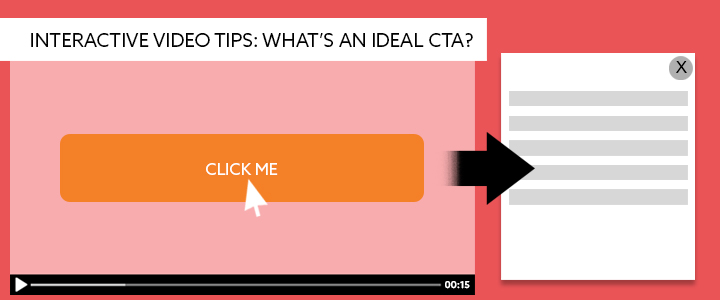by Basho Mosko | May 8, 2014 | How-Tos and Tips

With the rise of high quality video integrated into smartphones and tablets and the ubiquity of cameras like GoPro that are built for any and every circumstance, the opportunity to incorporate user generated content (UGC) into all video campaigns is greater than ever.
I know I’ve said it before, but while creating video is easier than ever, creating great content is still very challenging. Not only do you need a killer idea for your video to succeed, but you also need footage, which requires actors and sets and (usually) money. However, you don’t have to be rolling in the dough or hire professional actors; crowdsourcing video content can boost viewer engagement, vastly expand your initial audience base, and transfer some of the production costs over to the consumer.
Today we’re going to provide a few tips for successfully crowdsourcing video content and how to leverage interactivity to improve your chances for success.
(more…)
by Basho Mosko | Apr 18, 2014 | How-Tos and Tips

U.S. interactive ad revenue is exceeding that of broadcast television, according to figures like those from the Interactive Advertising Bureau’s Internet Advertising Revenue recent report, so why is it that online video is still finding itself relegated to garnish instead of the main course?
Too often broadcast spots are just reworked for an online audience as their broadcast production budgets dwarf that of their online video counterparts. Despite huge viewing and engagement numbers, web video is still generally a “nice-to-have,” or an afterthought. Brands still aren’t shooting for the mobile web or telling stories that work with this new viewing medium, and videos are generally still linear thoughts conceived of in a different time and for a different audience than those viewing content on the web.
So how can marketers make online video different from what they create for TV? Video is hard and expensive to make, right? Sure, good online video does require effort, but so do the out-of-home campaigns, television ads, and marketing campaigns that have driven results for brands and corporations forever. The change that needs to happen is at the point of conception. It’s time to start thinking of your online video as a valuable storytelling tool to achieve business goals.
One clear way to make online video worth the investment is to leverage it as your hub for brand, product, or content engagement, and the easiest and fastest way to do this is with Interactive Video.
(more…)
by Basho Mosko | Apr 3, 2014 | How-Tos and Tips, Mobile and HTML5

How would you react if you heard that mobile video viewing has increased by over 700 percent since Q4 of 2011? Shock, amazement, disbelief? “Yes to all of those!” was my reaction before downloading the Ooyala Global Video Index Q4 2013, which reports that year over year, time spent watching video on tablets and mobile devices is up an astounding 719 percent since Q4 of 2011, and up 160 percent since Q4 of 2012.
Brands and agencies aren’t sleeping on these statistics, and we’re regularly fielding questions about how to optimize Interactive Video for mobile devices. Want to know how to engage viewers on all devices? We’ll provide a framework for how to think about Interactive Video (IV) on mobile here. Read on.
(more…)
by Basho Mosko | Mar 26, 2014 | How-Tos and Tips

Great video is usually expensive, time-consuming, and generally requires an army of specialized personnel focusing on the many pieces of the puzzle. But where does that leave the bright, creative people regularly posting quality how-to videos, product overviews, “About Us” vignettes, recruiting videos, corporate communications, and video blog content on a budget? How can they compete against expensive, polished production when it comes to capturing viewer attention?
The most obvious answer is in the content. Content marketing has become sophisticated, refined, and effective, poising video as the primary delivery device for that content going forward. But there is one common element that almost all great content marketing has in common that has traditionally been missing from video: the effective call-to-action (CTA).
The ease with which anyone with a smartphone can create, upload, and share video content has opened up the world to a flood of video. To be honest, most of these videos are bad, some are good, and few are great. However, it’s not difficult to turn those “good videos” into “great videos” with the aid of Interactive Video (IV) and properly placed CTAs.
(more…)
by Basho Mosko | Mar 14, 2014 | How-Tos and Tips

The term Interactive Video can be used to describe a number of types of online experiences. From Red Bull’s Gives You Wings microsite to Deloitte’s engaging recruitment video, video integrated into website content has not only become ubiquitous but the line between video and website are also blurring. The fundamentals of an Interactive Video, which we dove into a few weeks ago in our What is an Interactive Video post, stay consistent throughout these online experiences, leaving many clients wondering what the best type of Interactive Video for their initiative is.
A menu-driven Interactive Video performs much like a website, allowing viewers to navigate through content to get to the information they’re looking for. With clear navigation links, back buttons, and one-click access to return to a menu, this design of Interactive Video lends itself well to content-heavy video experiences and can result in exponentially higher engagement times.
In this post we’ll go over menu-driven Interactive Videos (IV) and the projects that lend themselves to success with this format. But first, let’s take a look at how to create a menu-driven IV.
(more…)






